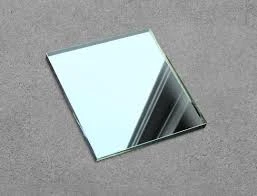

Understanding Low-E Glass Panels Enhancing Energy Efficiency in Modern Architecture
In the pursuit of sustainable building practices and energy efficiency, low-emissivity (Low-E) glass panels have emerged as a revolutionary solution in modern architecture. These technologically advanced glass panels feature a thin metallic coating that significantly enhances their thermal performance, making them a popular choice for residential and commercial buildings alike. This article explores the benefits, applications, and environmental impact of Low-E glass panels, giving you a comprehensive look into why they have become a staple in contemporary construction.
What is Low-E Glass?
Low-E glass panels are specially treated to minimize the amount of infrared and ultraviolet light that can pass through them without compromising the amount of visible light that is transmitted. The metallic coating is usually applied to one or more surfaces of the glass during the manufacturing process, reflecting heat back to its source. This means that in colder months, the heat generated internally stays inside, while in warmer months, external heat is kept out, effectively maintaining a stable indoor temperature.
Energy Efficiency and Cost Savings
One of the most significant advantages of Low-E glass panels is their ability to enhance energy efficiency in buildings. By reducing the amount of heat loss in the winter and heat gain in the summer, these panels can lower heating and cooling costs substantially. Studies have shown that buildings fitted with Low-E glass can reduce energy bills by as much as 10-15%. This not only translates to immediate financial savings for homeowners and businesses but also contributes to longer-term energy conservation efforts, as less energy consumption means a reduced carbon footprint.
Comfort and Aesthetics

Beyond energy savings, Low-E glass panels also improve indoor comfort levels. By minimizing temperature fluctuations and eliminating drafts, these glass panels create a more consistent indoor climate. Additionally, they help in reducing glare without obstructing natural light, thus enhancing the aesthetic appeal of interiors. Whether installed in large windows, sliding doors, or glass facades, Low-E glass ensures that spaces remain bright and welcoming while being functional and energy-efficient.
Applications in Architecture
The versatility of Low-E glass makes it suitable for various applications in architectural design. It is commonly used in residential settings, including homes and apartments, as well as in commercial buildings like offices, hotels, and shopping centers. In addition to windows and doors, Low-E glass is increasingly being used in curtain walls, skylights, and even glass roofs. Its ability to complement various design styles while providing essential energy-saving benefits has made it a favored choice among architects and builders.
Environmental Impact
With the global emphasis on sustainability and reducing greenhouse gas emissions, the use of Low-E glass panels aligns with a greener future. By promoting energy efficiency and minimizing reliance on fossil fuels for heating and cooling, Low-E glass contributes to climate change mitigation efforts. Furthermore, many manufacturers adhere to environmentally responsible practices in the production of Low-E glass, incorporating recyclable materials and minimizing waste, thereby further reducing the overall ecological impact.
Conclusion
In conclusion, Low-E glass panels have revolutionized the way we think about windows and glass in architecture. Their energy efficiency, cost savings, aesthetic flexibility, and contribution to sustainability make them an invaluable component in modern building design. As the world continues to strive toward greener living and environmentally responsible practices, the role of Low-E glass panels in creating comfortable, visually appealing, and energy-efficient spaces cannot be overstated. Ultimately, embracing this technology is not just a trend but a necessary step toward a more sustainable future in architecture and beyond. Whether you're building a new home or renovating an existing structure, considering Low-E glass panels is a decision that promises numerous benefits for both you and the environment.